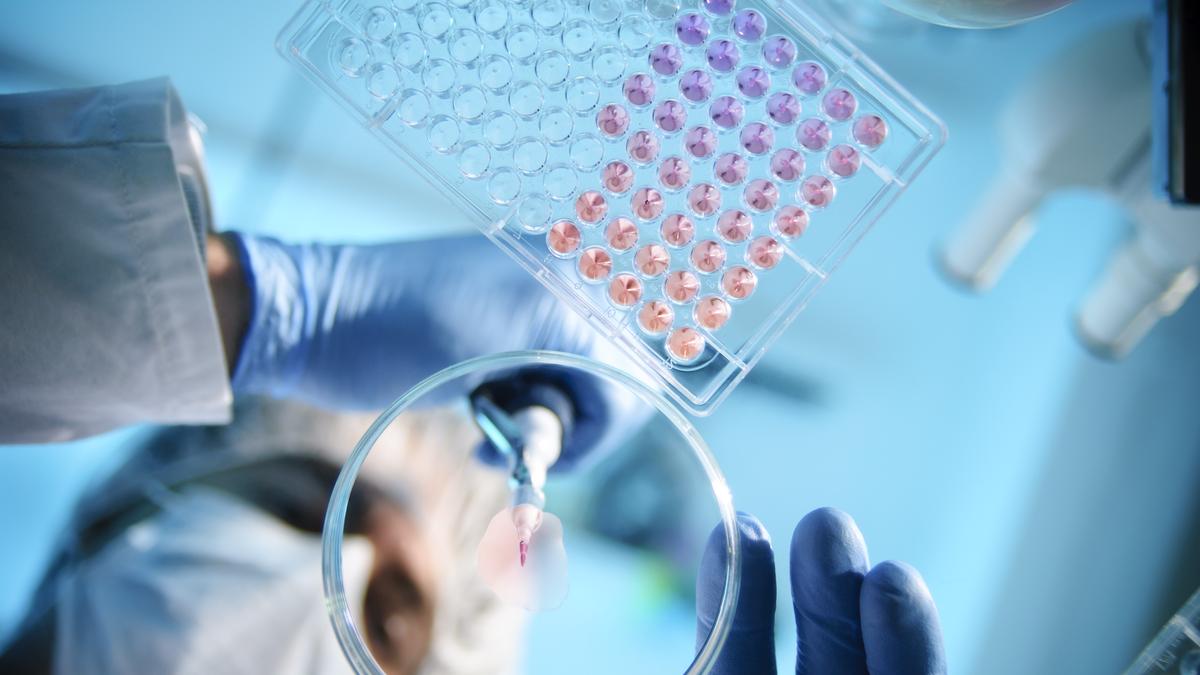Image for representation.
| Photo Credit: Getty Image/iStockphoto
Only about one in four public-funded research and development organisations in India give incubation support to start-ups and only one in six provide support to ‘deep tech’ startups. Only 15% collaborated with industry overseas and only half of them opened their facilities to outside researchers and students, say the findings of a study commissioned by the Office of the Principal Scientific Advisor and executed by the Confederation of Indian Industry (CII) and the Centre for Technology, Innovation, and Economic Research.
The study, via a detailed questionnaire, asked labs to rate themselves and supply data on 62 parameters such as their spend on R&D, number of young scientists, patents filed, technologies developed, participation of women scientists and their contribution to ‘national missions’ such as Deep Ocean Mission, National Quantum Mission, etc.
Labs of the ‘strategic sector’ such as those belonging to defence research, space, atomic energy research — all of which constitute the lion’s share of India’s overall Research and Development (R&D) spend — were excluded from the study due to the “sensitive nature of their work”. The labs studied were those affiliated to the Council of Scientific and Industrial Research, the Department of Science and Technology, the Ministry of Electronics and Information Technology, etc.
The Central government expenditure on R&D was around ₹55,685 crore in 2020-21, the figure cited in the study and the latest available. Excluding the expenditure of the strategic departments like DRDO (Defence), DAE (Atomic energy) and DoS (Space), the spending by key scientific agencies and other Central government departments was ₹24,587 crore.
Around 25% of the participating institutions reported spending between 75% and 100% of their budget on R&D. The organizations that reported less than the median share of spending on R&D and S&T (Science and Technology) in the overall budget were largely from ICAR (Agricultural research), CSIR, ICMR (Medical research), Ministry of AYUSH (Ayurveda and traditional medicine) and DST (Science and Technology).
Staff strength down
A large number of labs/institutes reported a decrease in the number of permanent staff in 2022-23 compared to the previous year and an increased reliance — from 17,234 to 19,625 — on contractual staff.
The median share of young researchers increased in 2022-23 to around 58 per cent from 54 per cent in the previous year. In the previous exercise, for around 193 organisations that had participated, this number was around 63 per cent to 65 per cent for the period from 2017-18 to 2019-20.
“This is the second time that we have had such an analysis. What we intend is that the data from such a study be closely analysed by institutions so that they can identify areas of improvement,” said Dr. Ajay Sood, Principal Scientific Adviser, “Overall, several researchers seem to have oriented themselves from being centres of scientific inquiry to innovation centres. I see that as a positive development. Academia and product innovation must go hand in hand.”
As part of its recommendation, the report advocates that every lab should be “mandated to review their existing mandates” and align themselves to Viksit Bharat goals. The mandate should focus on “critical technologies” as directed by the government and be taken on a “war footing” by public-funded R&D organisations. They should work closely with industry as well as with each other.
Published – April 29, 2025 10:28 pm IST
